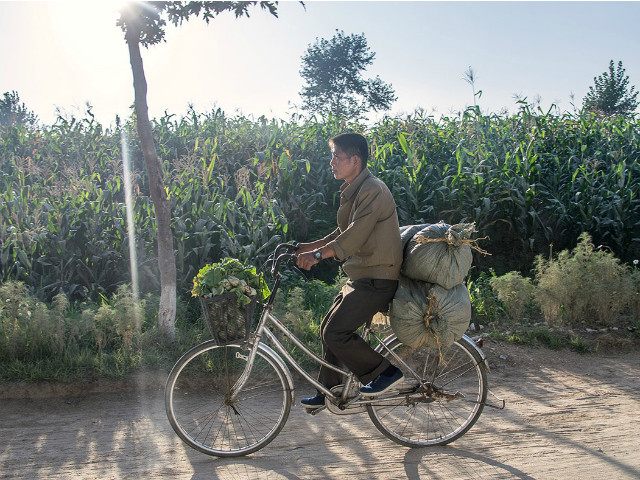The government of North Korea has warned citizens through its official newspaper to prepare for another “arduous march,” using the term for the famine that killed an estimated three million citizens in the 1990s. The state-run Rodong Sinmun reminded all North Koreans they must be willing to die for dictator Kim Jong-un if necessary.
“The road to revolution is long and arduous… We may have to go on an arduous march, during which we will have to chew the roots of plants once again,” the Rodong Sinmun warned. “Even if we give up our lives, we should continue to show our loyalty to our leader Kim Jong-un until the end of our lives,” it added. Other articles in the newspaper did not explicitly use the term “arduous march,” but demanded complete loyalty of citizens while North Korea’s infrastructure continues its collapse. “The ongoing general march is a sacred struggle in which the tradition of victory is given steady continuity after being created during the long journey of anti-Japanese bloody struggle and in the flames of the hard-fought Fatherland Liberation War,” one article reads, demanded all North Koreans must “defend the leader, the motherland and the revolution.”
The warnings to the starving North Korean people that their situation may deteriorate even further in the near future is part of what Pyongyang is calling the “70-Day Campaign,” a time for extreme loyalty to dictator Kim. The campaign, announced in the Rodong Sinmun on March 24, requires the North Korean people to “regard our party’s offensive revolutionary idea as their faith and thoroughly implement it.” There are no detailed commands related to this campaign.
The use of the term “arduous march” is causing many to interpret these messages as a sign of alarm in Pyongyang. The period in North Korean history known as the “arduous march,” following the decision by a declining USSR to demand North Korean pay for its food aid, lasted throughout the 1990s and killed an estimated three million people. One survivor recalls eating tree bark and roots and competing with other North Koreans to find anything edible in the countryside: “Because of the long-lasting famine, it was very competitive to find anything edible. When you went out to the mountains, plenty of people were already competing to dig out some edible herbs. Farmland was another battlefield to dig out the rice roots remaining in the soil.”
North Korea is facing what are being described as the harshest sanctions against its regime in history, after the United Nations Security Council agreed on a sanctions program that would prevent North Korea from selling natural resources abroad, as well as conventional weapons. The United States also passed unilateral sanctions, which North Korean officials dismissed as “laughable.”
Now, however, North Korea has to find a way to feed its populace, and reports indicate its food imports are way short of that required. South Korea’s Chosun Ilbo reported this week that North Korea needs to import 440,000 tons of food to feed its population, but it has only been able to purchase 17,600 tons. The paper reported that the government has begun to take measure, forcing citizens to hand over one kilogram of rice to the state every month.
North Koreans are already starving. One survivor, the dissident Park Yeonmi, described her life in North Korea in 2014 as “the same thing as the Holocaust.” “People were dying there, they don’t care… I saw the bodies on the street and I didn’t care because I was going to die,” she said, arguing that no one has political will because “everyone is starving, most of the people are just hungry.”

COMMENTS
Please let us know if you're having issues with commenting.